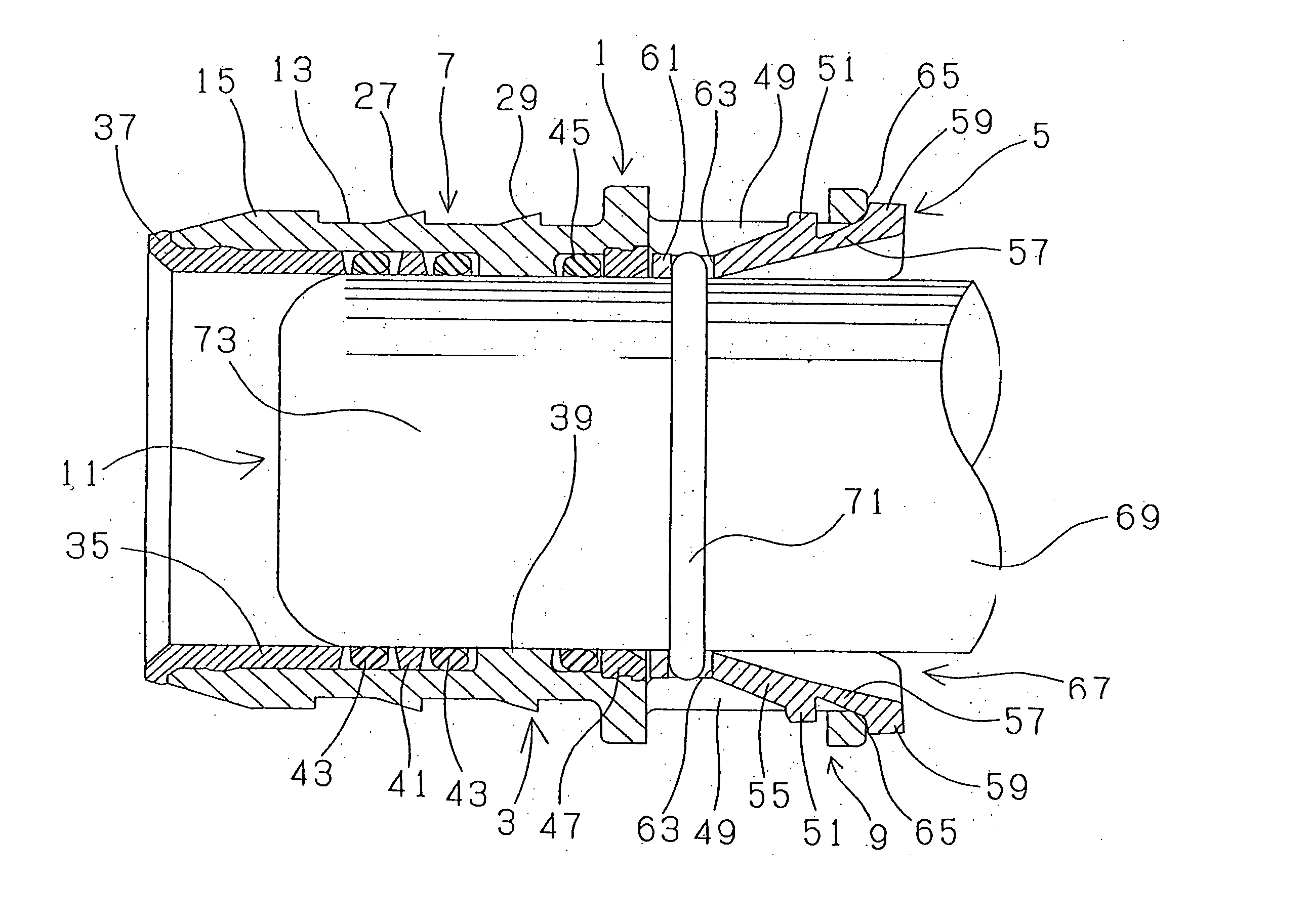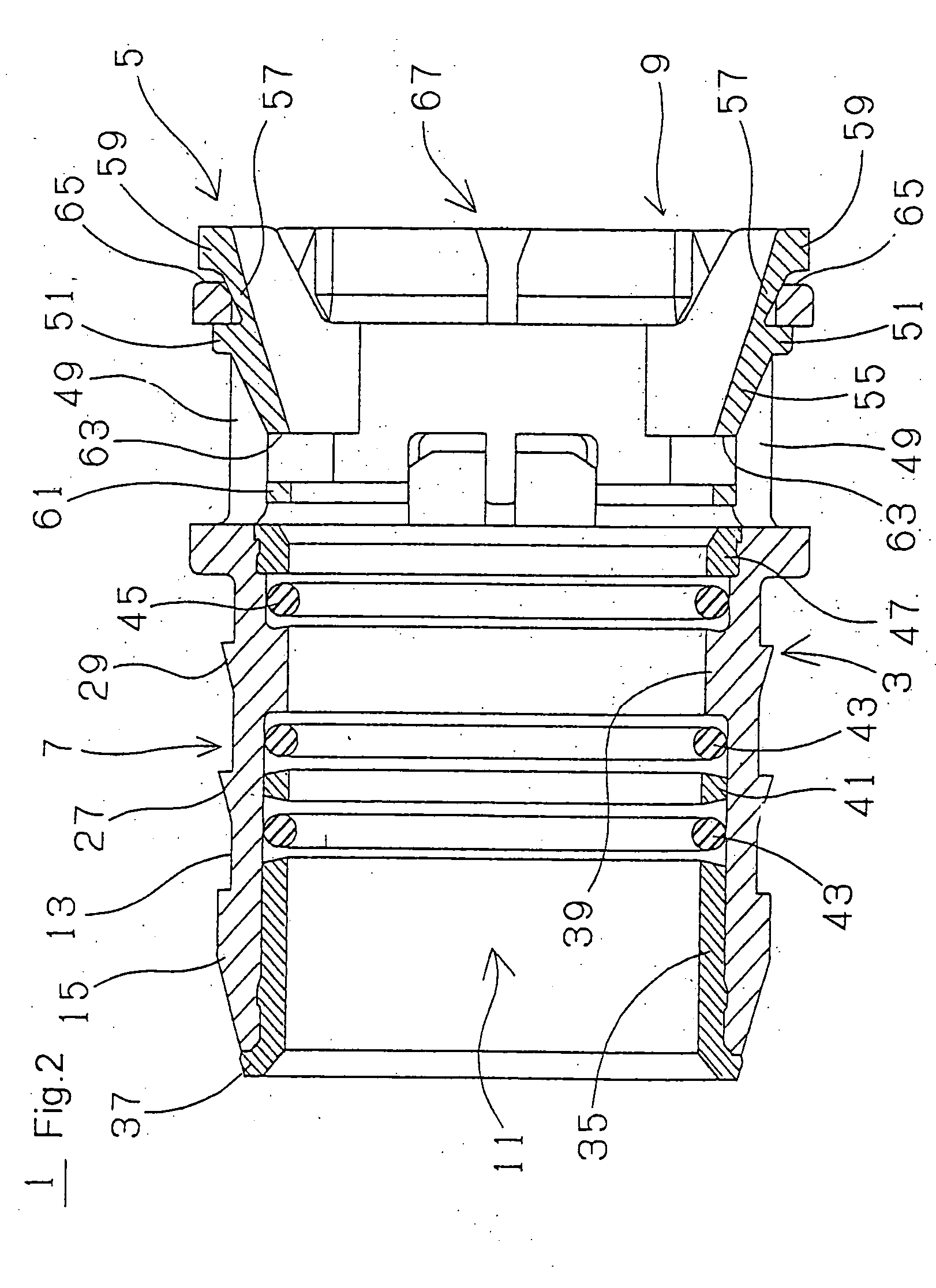Connecting structure for a thermoplastic tube, integrated assembly and method
a technology of connecting structure and thermoplastic tube, which is applied in the direction of hose connection, pipe-joint, coupling, etc., can solve the problems of inability to form a simple connecting structure, inconvenient use, and insufficient stress strength of the thick resin tube by itself to form a simple connection structure, etc., to achieve the effect of preventing disengagemen
- Summary
- Abstract
- Description
- Claims
- Application Information
AI Technical Summary
Benefits of technology
Problems solved by technology
Method used
Image
Examples
second embodiment
[0054] An annular channel 91 may be provided on the annular stopper 15 at the first end of tube connecting portion 7 and a FVMQ O-ring 93 may be fitted to annular channel 91 to seal the linkage between the stopper 15 and the resin tube 75 as illustrated in FIG. 8. Alternately, an FKMQ O-ring 93 may be used for the tube. FIG. 8 is a diagram illustrating a second embodiment for connecting quick connector 1 to resin tube 75 utilizing O-ring 93.
third embodiment
[0055] In place of rubber band 79, a rubber band 95 may be used having a single EPDM layer of hardness 7 Mohs which is 40 mm long with an inner diameter of 34.5 mm and a thickness of 5.0 mm. The rubber band 95 is fitted to the outer circumference of the connecting end 77 of resin tube 75 in the same manner as was rubber band 79. FIG. 9 is a diagram illustrating a third embodiment in which the quick connector 1 has the O-ring 93 placed around tube connecting portion 7 before being connected to resin tube 75 with rubber band 95. Alternately, the quick connector may be used without O-ring 93.
[0056] Alternately, the outer circumference of rubber band 79 or rubber band 95 may be tightened by a clamping means. FIG. 10 is a diagram illustrating an embodiment utilizing a clamping means, specifically the screw type metallic band 97 having a screw at a longitudinal mid point where stopper 27 is provided on the outer circumference of the rubber band 79. FIG. 11 employs a screw type metallic ba...
PUM
| Property | Measurement | Unit |
|---|---|---|
| Length | aaaaa | aaaaa |
| Diameter | aaaaa | aaaaa |
Abstract
Description
Claims
Application Information
 Login to View More
Login to View More - R&D
- Intellectual Property
- Life Sciences
- Materials
- Tech Scout
- Unparalleled Data Quality
- Higher Quality Content
- 60% Fewer Hallucinations
Browse by: Latest US Patents, China's latest patents, Technical Efficacy Thesaurus, Application Domain, Technology Topic, Popular Technical Reports.
© 2025 PatSnap. All rights reserved.Legal|Privacy policy|Modern Slavery Act Transparency Statement|Sitemap|About US| Contact US: help@patsnap.com



